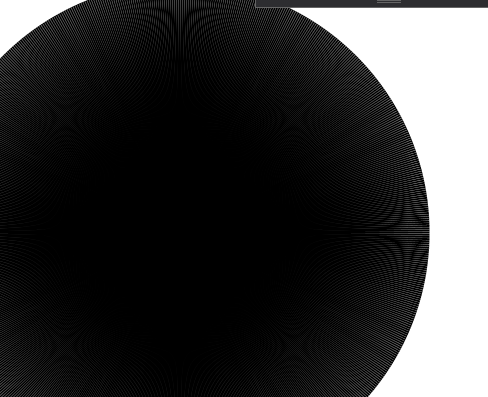No, this isn’t a very detailed picture of an eye, no matter how cool that would be. I did, however, get a C# program to generate these rays, each spawning from the center of an image I defined. It includes a ton of little math functions, including converting degrees to radians, calculating the image’s place on the Canvas, and determining Line length and slope. The picture above shows 360 Lines, one every degree, whereas the two below each show every 10 degrees, and every half degree, respectively.
In the one on the left, you can see the image I was using to draw from, which was just a circle drawn using an Ellipse object on the Canvas. That’s great and all, but when I get to adding cameras, the FOV of the rays will look more like the one on the right, and as such they’ll cover the camera.
This led me to mocking up a camera and putting it above the lines, by setting its ZIndex. Here, you can see the camera over a set of rays every 15 degrees, as well as every half degree.

I’m gonna preface this camera by saying that I am not an artist. I know enough to be dangerous, but most of the time I ask one of my roommates, and friends, who’s more of a professional artist, how to do graphic design-related work. You must be wondering about the shape of the camera. This shape is similar to how current construction plans show cameras and occupancy sensors, in order to detail which direction they should face. It also allows an architect to denote what FOV the camera has, be it 360 degrees, above or 270. I’m using the dark magenta to denote which directions the camera can see out of, and a darker gray to show the camera has no vision in that direction.

Now that I have been able to differentiate between the different camera FOV’s, and get lines to draw demonstrating the 360 camera, the next step was to figure out how to calculate a different field of view on a 270 camera, which you can see in the below image.

My next task in this line (no pun intended) of work, is to determine what to do about line collisions, and how to detect them. This will eventually be useful for calculating how many cameras can see a specific region of the building, and in creating an algorithm for determining the minimum number of cameras necessary.
We’re done.(?)(!)(%) I’m truly not sure which punctuation best suits that sentence. It definitely doesn’t feel like it’s over yet. Then again, when you’ve been . . .
Did I already post the video of the 1987 classic “It’s the End of the World as We Know It (And I Feel Fine)” by . . .




